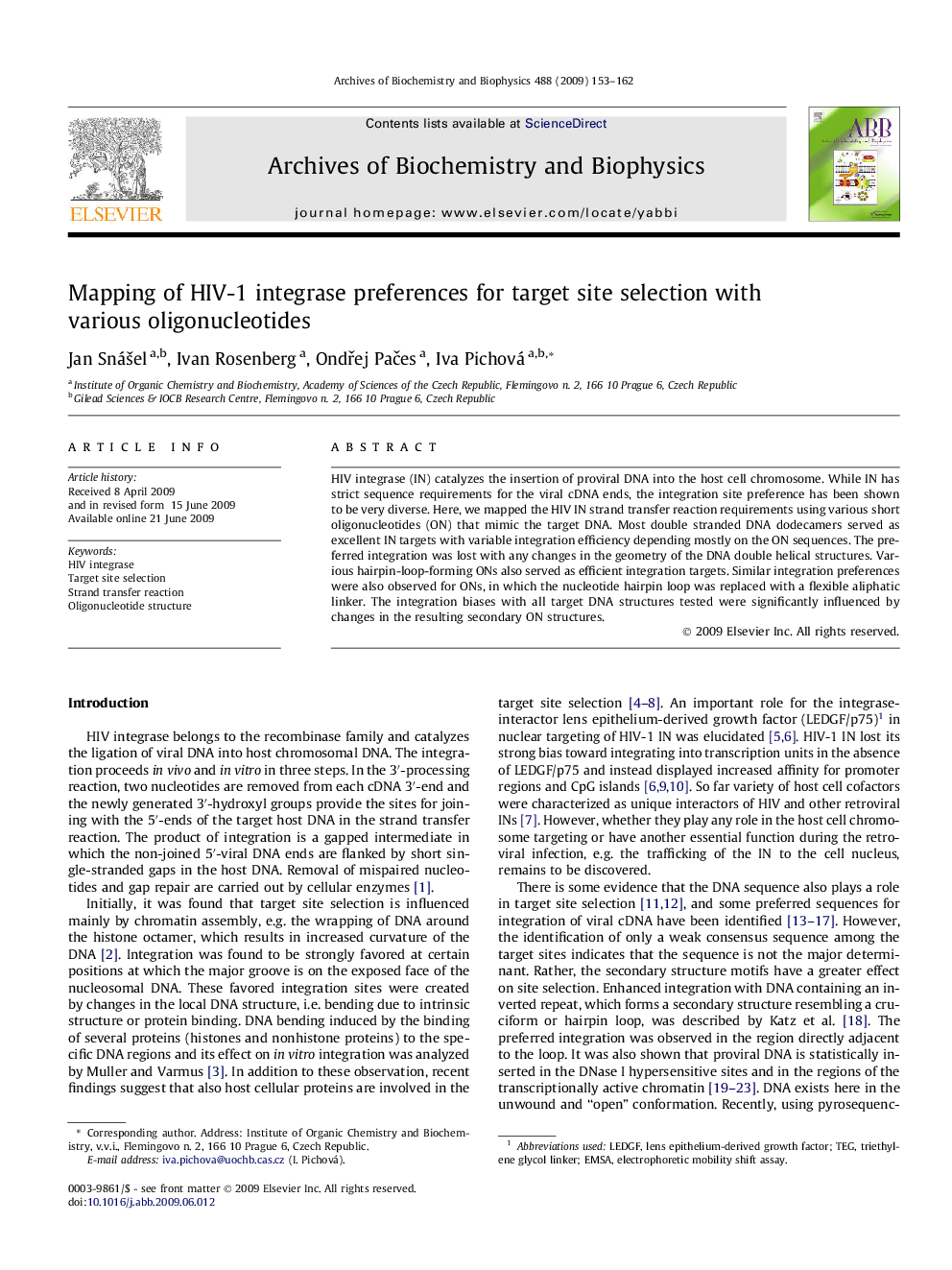| Article ID | Journal | Published Year | Pages | File Type |
|---|---|---|---|---|
| 1926302 | Archives of Biochemistry and Biophysics | 2009 | 10 Pages |
HIV integrase (IN) catalyzes the insertion of proviral DNA into the host cell chromosome. While IN has strict sequence requirements for the viral cDNA ends, the integration site preference has been shown to be very diverse. Here, we mapped the HIV IN strand transfer reaction requirements using various short oligonucleotides (ON) that mimic the target DNA. Most double stranded DNA dodecamers served as excellent IN targets with variable integration efficiency depending mostly on the ON sequences. The preferred integration was lost with any changes in the geometry of the DNA double helical structures. Various hairpin-loop-forming ONs also served as efficient integration targets. Similar integration preferences were also observed for ONs, in which the nucleotide hairpin loop was replaced with a flexible aliphatic linker. The integration biases with all target DNA structures tested were significantly influenced by changes in the resulting secondary ON structures.
